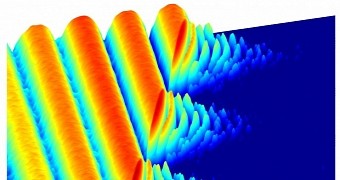In a recent paper in the journal Physical Review X, researchers with US' Princeton University detail their work turning light into a solid by means of crystallization. That's right, these brainiacs are now busy transforming light into crystal.
True, they haven't yet created actual blocks of light, but you have to give it to them, this is by far one of the coolest ongoing research projects. Why? Professor Andrew Houck has the answer, “It's something that we have never seen before. This is a new behavior for light.”
So, how does one crystallize light?
As detailed in the journal Physical Review X, the scientists started by piecing together a structure comprising superconducting materials. These materials packed 100 billion atoms designed to act as a single so-called artificial atom.
Once this structure was created, the researchers placed a superconducting wire containing photons, i.e. basic elements of light, in its proximity. This led to the photons' inheriting some of the properties of the artificial atom and starting to behave like solid material.
In a nutshell, the photons became bound together and froze in place. Otherwise put, light was made to mimic the properties of a solid. This achievement is all the more impressive given the fact that photons do not normally interact with one another.
“We have used this blending together of the photons and the atom to artificially devise strong interactions among the photons. These interactions then lead to completely new collective behavior for light – akin to the phases of matter, like liquids and crystals, studied in condensed matter physics.”
“Here we set up a situation where light effectively behaves like a particle in the sense that two photons can interact very strongly. In one mode of operation, light sloshes back and forth like a liquid; in the other, it freezes,” explains researcher Darius Sadri.
In the image accompanying this article, the photons are shown flowing like waves (on the left), and then moving on to become frozen in place (on the right). As already mentioned, photons have never before been observed behaving like this.
The end goal of these experiments
The Princeton University scientists expect that their toying with light in this manner will lead to a better understanding of the physics of matter. Besides, this research project has high chances to aid the development of exotic materials like room-temperature superconductors.
“We are interested in exploring – and ultimately controlling and directing – the flow of energy at the atomic level. The goal is to better understand current materials and processes and to evaluate materials that we cannot yet create,” explains specialist Hakan Türeci.

 14 DAY TRIAL //
14 DAY TRIAL //